 W
WJean Accart was a French flying ace during World War II.
 W
WJesse D. Auton was a brigadier general in the United States Air Force.
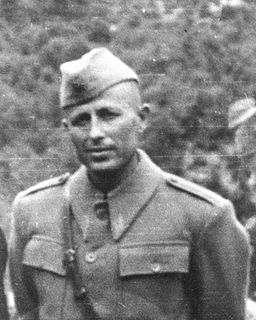 W
WMitar Bakić, was a Yugoslav politician, general and People's Hero of Yugoslavia. During World War II, he was political commissar of the 4th Montenegrin brigade, 2nd Proletarian Division and 2nd Corps. After the war, he was the chief of staff of Josip Broz Tito, secretary-general of the Yugoslav government and member of Yugoslav mission in United Nations. He also had rank of reserve lieutenant general of Yugoslav People's Army.
 W
WElisabeth Becker was a concentration camp guard in World War II.
 W
WAleksandar Beric, born in Novi Bečej, Serbia, was an officer in the Royal Yugoslav Navy during the German invasion of Yugoslavia in 1941.
 W
WSławomir Maciej Bittner was a Polish scoutmaster (podharcmistrz) and second lieutenant of the Armia Krajowa.
 W
WFrederick C. Bock was a World War II pilot who took part in the atomic bombing of Nagasaki in 1945.
 W
WChristianus Franciscus Johannes Boers was a captain in the Royal Netherlands Army during World War II who scored one of the few Allied victories during the German invasion of the Netherlands, by rallying his men in holding off and pushing back the German attackers during the Battle of the Afsluitdijk, fought from 12 to 14 May 1940.
 W
WPyotr Yevseevich Braiko was a Soviet soldier during the Second World War who gained the status of Hero of the Soviet Union following the conflict.
 W
WWilliam Charles Brittain was a lance-corporal of the Royal Warwickshire Regiment who was serving in No. 4 Commando at the time of his capture in Suda Bay, Crete, in June 1941. During the Second World War he became a member of the "staff" at the PoW "holiday camp" in Genshagen, Berlin in mid-1943 and later a Rottenführer in the Waffen-SS British Free Corps. In Dresden in February 1945 he "had long since lost his enthusiasm for the unit and was planning to escape. During a conversation with his girlfriend, a Norwegian nurse, he boasted of his plans and also claimed that he had foreknowledge of the bombing raids. Shocked by this, she denounced him almost immediately to the Gestapo and the BFC were arrested en masse. "[His] court-martial ... took place at Colchester in June 1946 and he received a ten-year sentence. Two months later he was found to be suffering from an incurable form of Crohn's disease and he was released.
 W
WStanisław Broniewski alias Stefan Orsza, Witold, K. Krzemień was a Polish economist, Chief Scouts of the Gray Ranks and Second lieutenant of the Home Army during the World War II.
 W
WBoško Buha was a young Yugoslav Partisan and an honored icon of the Yugoslavian resistance during World War II.
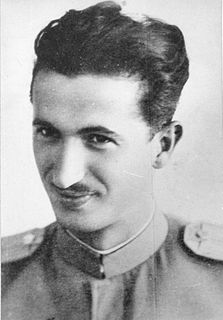 W
WRudi Čajavec was a Yugoslav pilot, best known as the first airman of Partisan air force.
 W
WAngelico (Angelo) Carta was an Italian military officer, best known for his actions during the Axis occupation of Crete in World War II.
 W
WHelmut Clissman was a German spy during World War II.
 W
WErik Crone was a member of the Danish resistance executed by the German occupying power.
 W
WJan Kazimierz Daszewski was a fighter pilot in the Polish Air Force in World War II.
 W
WLeonardo de Benedetti was an Italian Jew and physician who was interned in the Auschwitz concentration camp from February 1944 until its liberation in January 1945. After the end of the Second World War he and fellow inmate Primo Levi wrote Auschwitz Report, a factual report of conditions inside the camp.
 W
WSamuel del Campo was a Chilean diplomat, and Righteous Among the Nations. From 1941 to 1943, he worked in Bucharest, Romania. He is credited with saving 1,200 Jews by issuing them Chilean passports.
 W
WJames Charles Dempsey, was a decorated submarine commander during World War II who reached the rank of Rear Admiral in the United States Navy. He died, aged 70, on July 9, 1979, of congestive heart and kidney failure at the Portsmouth Naval Hospital in Norfolk, Virginia.
 W
WJosef Diefenthal was a mid-ranking commander in the Waffen-SS of Nazi Germany and a war criminal during World War II. He was a recipient of the Knight's Cross of the Iron Cross on 5 February 1945 for his actions during the Ardennes Offensive, while in command of the 3rd Battalion, 2nd SS Panzer Grenadier Regiment, SS Division Leibstandarte.
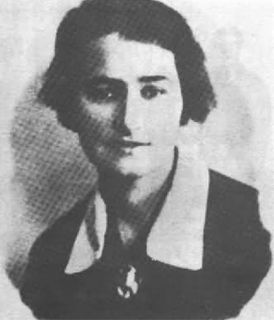 W
WJadwiga Falkowska codename: Jaga, Zdzisława, Ludwika, Zaleska was a Polish teacher, social activist, Scoutmaster (harcmistrzyni) and one of the founders of Girl Scouting in Poland.
 W
WHarold Edwin 'Harry' Flower was an Australian WWII veteran, a prisoner of war and a 1920s rugby league player in the New South Wales premiership competition with St. George.
 W
WJohn Trevor Godfrey was an American fighter pilot and flying ace in the 336th Fighter Squadron, 4th Fighter Group, Eighth Air Force during World War II.
 W
WAlbert Viljam Hagelin was a Norwegian businessman and opera singer who became the Minister of Domestic Affairs in the Quisling regime, the puppet government headed by Vidkun Quisling during Germany's World War II occupation of Norway.
 W
WHuang Yiguang was a Mexican-born Chinese politician, aviator, and explorer. He took part in one of a number of assassination attempts on the life of the Chinese politician Wang Jingwei, who collaborated with Japan during their occupation of China from 1937 to 1945. An aviator and explorer, he travelled widely with strong connections with the Chinese community in the United Kingdom. A former associate of Wang, he was welcomed in Wang's inner circle, but his assassination attempt failed when his radio equipment was discovered. He was executed by the Empire of Japan on 17 December 1940.
 W
WYusuf Ibrahim, also known as Yusuf Bey Murad Ibrahim, was a physician and pediatrician. He was responsible for the description of congenital cutaneous candidiasis, originally known as Beck-Ibrahim disease. The discovery of his association with the Nazi euthanasia program during the World War II resulted in an effort to rename this disease. The clinic for child and adolescent medicine at Friedrich Schiller University in Jena also chose to change its name from Kinderklinik Jussuf Ibrahim after his Nazi past was uncovered.
 W
WLance-Naik Islam-ud-Din was a soldier of the British Indian Army during World War II, who was posthumously awarded the George Cross for sacrificing his own life to save others. He was serving in the 6th Battalion, 9th Jat Regiment, when on 12 April 1945 at Pyawbwe, central Burma, a live grenade went astray and threatened to cause a large number of casualties in his unit. Islam-ud-Din threw himself on the grenade at once, showing no hesitation. Saving the lives of his comrades, he was killed instantly, aged only 19 or 20 and leaving behind a widow in India. He was described as steadfastly courageous and a good leader by his superior officers after his death. He was gazetted on 5 October 1945.
 W
WHelmut Kapp was a member of the Gestapo during World War II. He was killed in 1943 by a partisan death squad in Jędrzejów, Poland.
 W
WStanisław Józef Bronisław Kasznica was the last commander of the National Armed Forces (NSZ), an anti-communist, and anti-Nazi paramilitary organization, which was part of the Polish resistance movement in World War II and in the period following it.
 W
WOkinori Kaya was the Minister of Finance of Japan between 1941 and 1944. In 1945, he was captured by the Allies, tried by the International Military Tribunal for the Far East and sentenced to twenty years imprisonment. Paroled in 1955, he later served as Minister of Justice from 1963 until 1964.
 W
WGerhard Klopfer was a senior official of the Nazi Party and assistant to Martin Bormann in the Office of the (Nazi) Party Chancellery.
 W
WMykola Lemyk was a Ukrainian political activist and leader of the Organization of Ukrainian Nationalists (OUN).
 W
WJānis Lipke was a Latvian rescuer of Jews in Riga in World War II from the Holocaust in Latvia.
 W
WOberführer Hans Loritz joined the SS in September 1930 and the NSDAP in August 1930. In 1933, he formed and commanded the SS Standarte at the Dachau concentration camp.
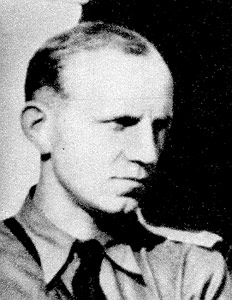 W
WFlorian Marciniak was a Polish scoutmaster (harcmistrz), and the first Naczelnik of the paramilitary scouting resistance organization, the Szare Szeregi, during the Second World War.
 W
WJoe Lennard Mason was a colonel in the United States Air Force. He commanded the 352nd Fighter Group during World War II and was a fighter ace. He later commanded the 3595th Pilot Training Wing and the 49th Fighter-Bomber Wing during the Korean War.
 W
WElza Cansanção Medeiros, popularly known as Major Elza, was a Brazilian Army officer and World War II veteran. She was the highest-ranking female officer in the Brazilian Army with the rank of Major, having deployed to Italy during the war along with the Brazilian Expeditionary Force as a nurse. Medeiros used to lecture about the Brazilian participation in World War II.
 W
WVeselin Misita was a Bosnian Serb military commander holding the rank of lieutenant colonel during World War II.
 W
WHarald-Otto Mors was a Nazi German battalion commander with the Fallschirmjäger who planned and led the Gran Sasso raid to rescue Benito Mussolini following his arrest in September 1943. He received the German Cross in Gold on 26 September 1943.
 W
WGeorg Neuffer was a general in the Luftwaffe of Nazi Germany during World War II. He was a recipient of the Knight's Cross of the Iron Cross. Neuffer surrendered to the British troops in May 1943 following the surrender of German troops in North Africa. He was released in October 1947.
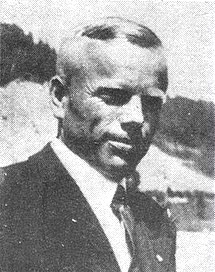 W
WJózef Pukowiec codename: Chmura, Pukoc was a Polish teacher, scoutmaster, and Polish resistance activist during the Second World War.
 W
WSlavko Rodić, was a Yugoslav partisan, general of Yugoslav People's Army and People's Hero of Yugoslavia.
 W
WLeo Rosen was a U.S. cryptanalyst who worked with Frank Rowlett at Signals Intelligence Service (S.I.S.) before the start of World War II on Japanese ciphers. Rowlett found a method to read the messages enciphered on the Japanese PURPLE machine. Rosen deduced correctly the mechanism of the cipher machine, even though the mechanism used by PURPLE, telephone stepping switches, was substantially different from other machines.
 W
WFriedrich Wilhelm Ruppert (2 February 1905 – 29 May 1946). An SS trooper in charge of executions at Dachau concentration camp, he was, along with others, responsible for the executions of British SOE agents Noor Inayat Khan, Madeleine Damerment, Eliane Plewman and Yolande Beekman.
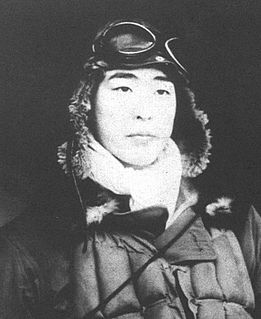 W
WMasao Sasakibara was an ace fighter pilot in the Imperial Japanese Navy during World War II. Participating in many of the Pacific War battles and campaigns as a member of several units, Sasakibara was officially credited with destroying 12 enemy aircraft. He was seriously injured while supporting the Ke operation during the Guadalcanal Campaign, but survived after a lengthy stay in the hospital. He returned to Japan in June 1945 and survived the war.
 W
WPieter Wilhelmus Scharroo was a Dutch military commander in charge during the Battle of Rotterdam. While he was trying to negotiate a ceasefire with his German counterparts, the Rotterdam Blitz took place. He was frustrated after the bombing, and refused to continue the negotiations with the German army.
 W
WEinar Skinnarland DCM was a Norwegian resistance fighter during the Second World War.
 W
WGerda Steinhoff born in Danzig-Langfuhr, was a Schutzstaffel (SS) Nazi concentration camp overseer following the 1939 German invasion of Poland.
 W
WJan Šverma was a Czechoslovak journalist, communist activist and resistance fighter against the Nazi-backed Slovak State, considered a national hero in the Czechoslovak Socialist Republic.
 W
WVelimir Terzić was a Yugoslav partisan, general of Yugoslav People's Army and historian. Prior to World War Two, he was captain of Royal Yugoslav Army. After Yugoslav defeat in April War, he joined Montenegrin partisans and took part in 13 July Uprising. In 1943 he was chosen for deputy of general Arso Jovanović, chief of partisan Supreme HQ. After World War Two, he remained in Yugoslav People's Army and had many roles. He was deputy of Minister of Defense, head of Military Academy, chief inspector of Yugoslav People's Army. He retired from the army in 1955 and became head of Military History Institute.
 W
WWilbur Jackson Thomas was an American combat pilot who was a United States Marine Corps fighter ace during World War II. He flew a Vought F4U Corsair in Marine Fighting Squadron 213 (VMF-213) which was assigned to the aircraft carrier USS Essex (CV-9) and was one of the first Marine squadrons to augment carrier air groups. Thomas was a triple ace with 18.5 aerial victories. He was killed in January 1947 attempting to land a Grumman F7F Tigercat at the Marine Corps Air Station El Toro in California.
 W
WPaul Thümmel, aka Agent A-54, was a German double agent who spied for Czechoslovakia during World War II. He was a high-ranking member of the German military intelligence organisation, the Abwehr, and was also a highly decorated Nazi Party member.
 W
WBedrich "Frederick" Tintner, born on 15 June 1912 in the town of Novy Jicin, Czechoslovakia, in the Moravian Sudetenland, escaped the Gestapo during the Second World War and served in the British, Czech and Soviet armed forces. He took part in the Battle of the Dukla Pass. Tintner's parents, sister, and a brother, along with many other relatives, all died in the Auschwitz concentration camp. Tintner married a woman named Ruth in Norwich on 27 February 1943. After the war, Tintner and his family settled in Denham, England, where he started a textile import business. He became a British citizen in 1948. He died on 19 March 2015 at the age of 102 years old.
 W
WFreiherr Horst Julius Treusch von Buttlar-Brandenfels was a German general. Freiherr, which equals "Baron", was his title of nobility.
 W
WGrigory Alekseyevich Vorozheikin was a Soviet Air Force general and later Marshal of Aviation.
 W
WMax Wolff Filho was a Brazilian Army sergeant, a member of the Brazilian Expeditionary Force who fought in Italy in World War II.
 W
WMikhail Alekseyevich Yegorov, along with Meliton Kantaria, was one of the three soldiers credited with raising the Soviet flag over the Reichstag on the 2 May 1945 after the Battle of Berlin.
 W
WEmmy Zehden (1900-1944) was a German Jehovah's Witness executed by the Nazis.